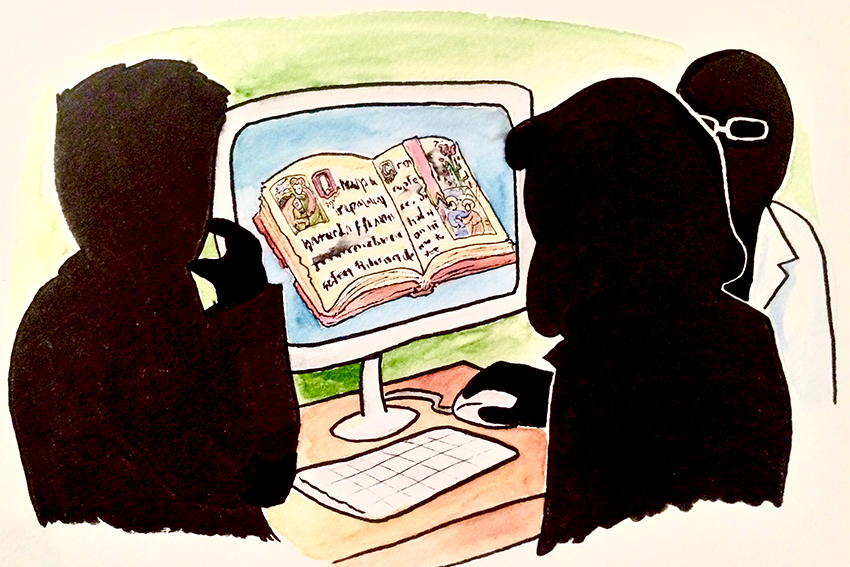At first glance, it would seem that computer scientists and humanities researchers live in different worlds.
Today, however, computers can help human researchers better study traditionally human subjects — such as linguistics, literature and archaeology — in a field known as digital humanities. During the summer of 2017, UT will host an interdisciplinary research institute called DH@UT aimed at training students in this
new field.
DH@UT is one of three pop-up institutes, or short-term interdisciplinary teams, that will conduct workshops next summer. DH@UT will be led by Tanya Clement, an assistant professor in the School of Information, and will include professors from the College of Liberal Arts and staff from UT Libraries. The pop-up institutes are an initiative by the Office of the Vice President of Research.
Digital humanities integrates computers and computational methods with the humanities in order to discover more about topics that could not be found using traditional methods. These methods include digital archiving, electronically searching documents and using language-processing computing.
According to team member and archaeology associate professor Adam Rabinowitz, another way to think about digital humanities involves converting qualitative information, such as literature and language, into quantitative information that can be analyzed statistically.
“Digital humanities is about using technology in humanities research, but it’s also about thinking about technology from a humanist perspective,” Clement said. “It’s kind of a two-way street.”
Digital humanities gives humanities researchers the ability to work with larger datasets and find patterns within them, according to English associate professor Lars Hinrichs. Some datasets can reach billions of words, which Hinrichs said is too big for a human researcher to analyze over a lifetime.
“We’re talking about data sets that are so big that you can’t get any insights about them using traditional methods,” Hinrichs said. “You know how to read up close, how to weight things properly, if you’re a classically trained humanist, but the digital stuff gives you the big picture.”
While the workshop for the pop-up institute won’t start until next summer, the digital humanities research team is currently busy coming up with a curriculum for an undergraduate certificate program to complement the institute.
A more formal digital humanities structure at UT can help humanities students gain more marketable skills and more job options, such as working with data at museums or libraries, after they graduate, according to Hinrichs.
“Our students are going out into careers that involve not just using technology but really thinking through technology,” English professor Matt Cohen said. “If they have a lot of different opportunities in a lot of different areas, it will enhance their chances of getting a job.”
Although interdisciplinary work is common at UT, Clement said the school doesn’t have the formal infrastructure that this work requires.
“Formalizing and bringing to the surface things that people are already doing at UT allows folks to find other people to work with,” Clement said. “It facilitates collaboration and allows people to have a better sense of how digital humanities can and does happen.”
Interdisciplinary work can help create new ideas and share methods across fields, Hinrichs said.
Rabinowitz said it is beneficial for disciplines that share similar tools to collaborate.
“The interdisciplinary nature of it is fundamental for the community of practice to move forward and not just keep doing the same stuff over and over again,” Rabinowitz said. “When you can have a tool that is developed in one context and then reapplied in a new way in a different context, everyone wins.”
According to Hinrich, the end goal of the DH@UT pop-up institute, as well as the digital humanities certificate, is to have a permanent center at the University with its own courses and researchers.
“There have been several things beginning to develop over the past few years looking at things from digital humanities,” said Katie Pierce Meyer, the humanities librarian for architecture and planning. “I think this is just one more step in bringing together a lot of people in one space to hammer out what that looks like at UT.”















